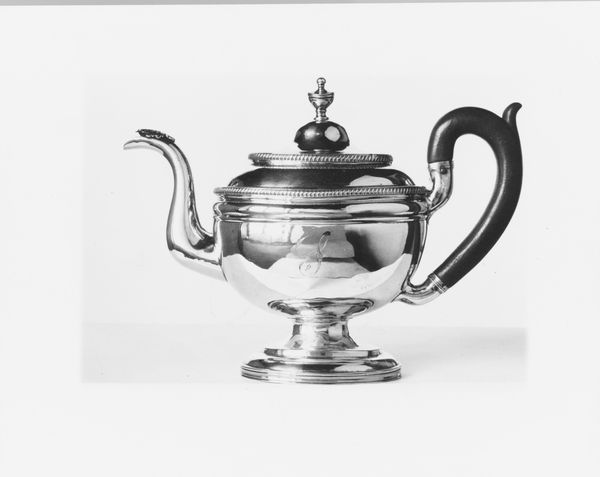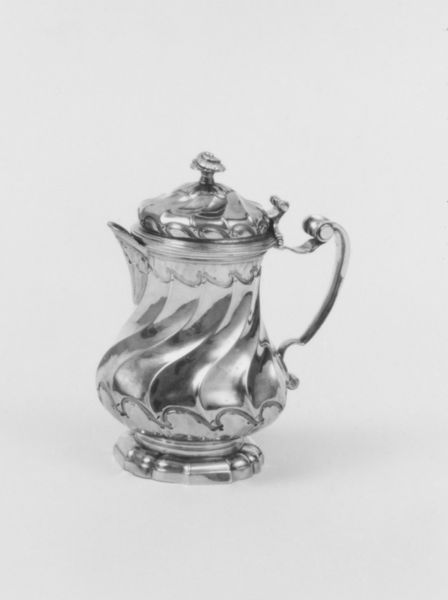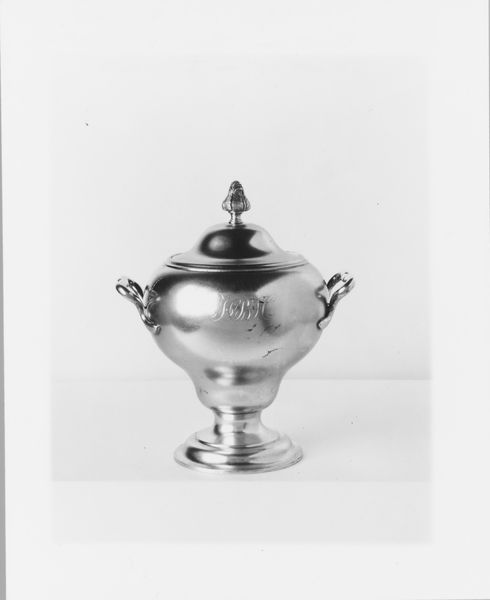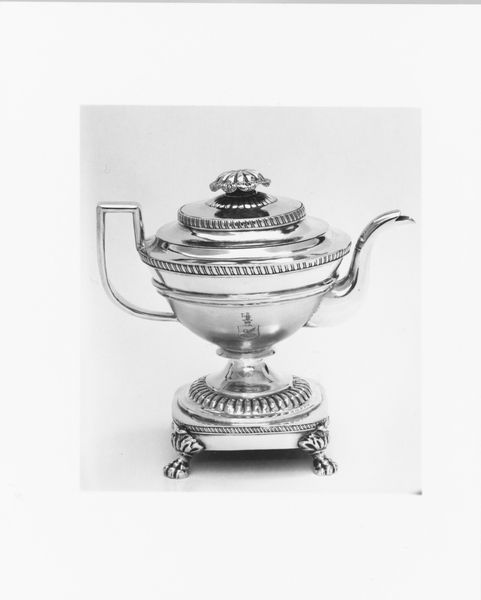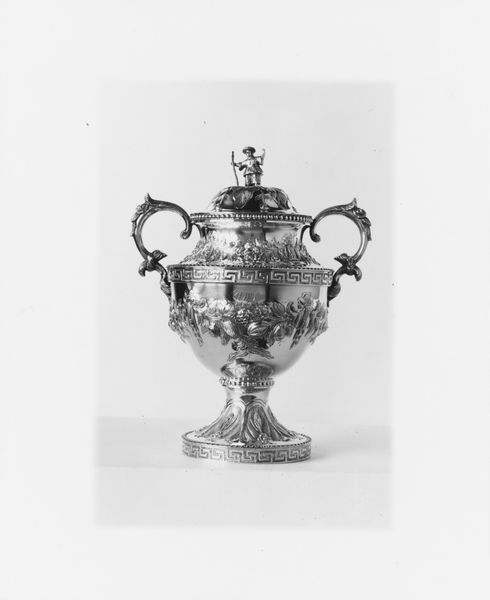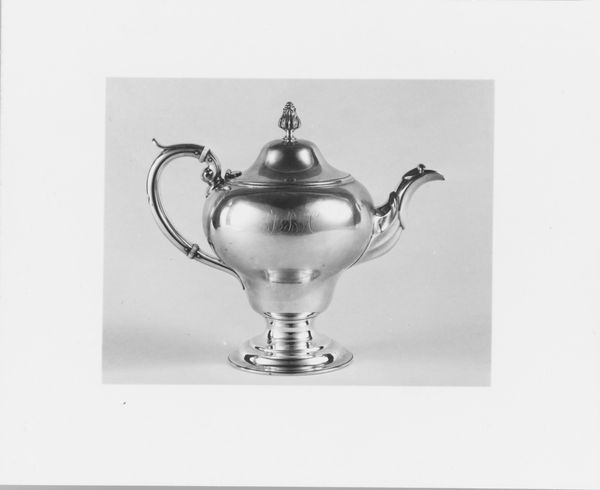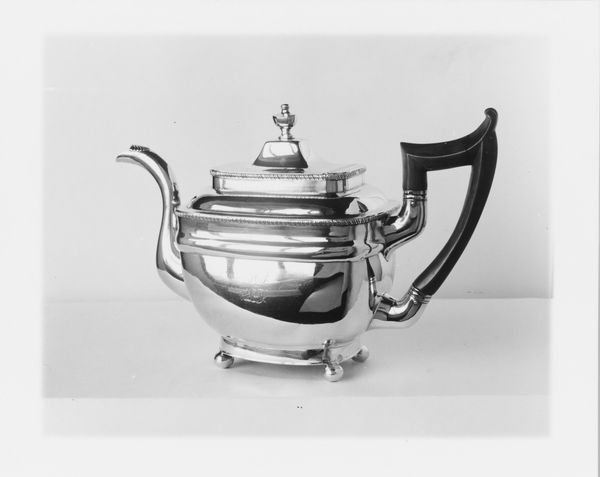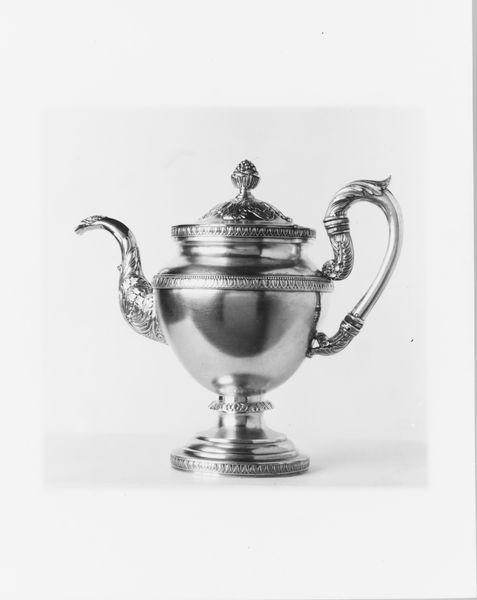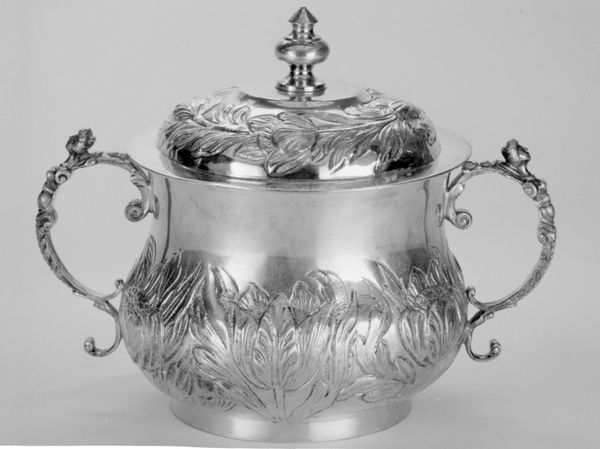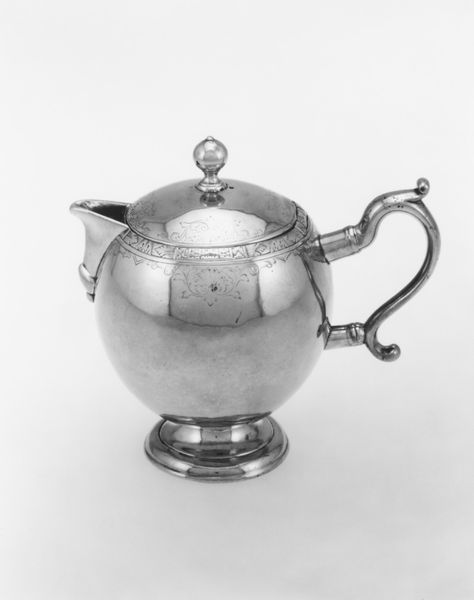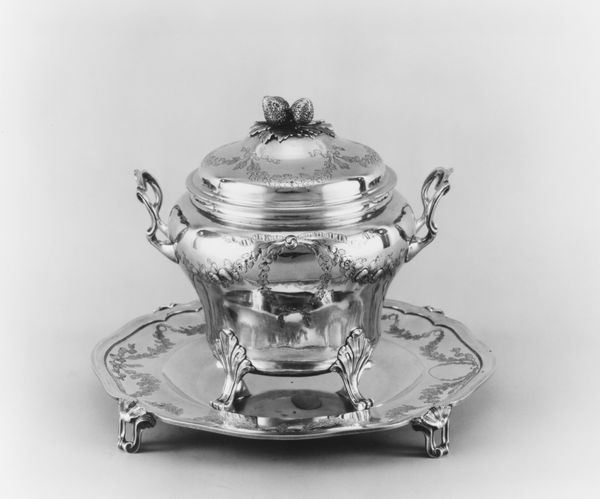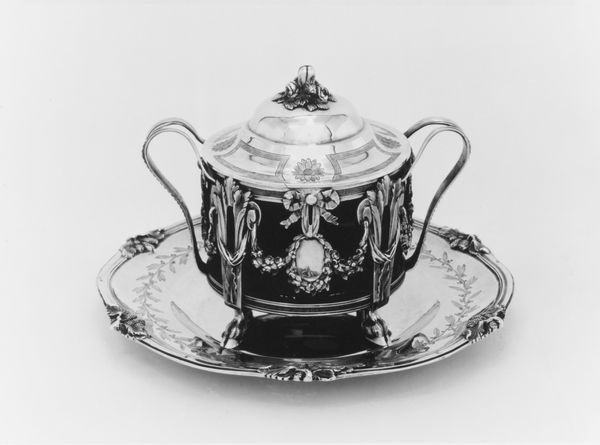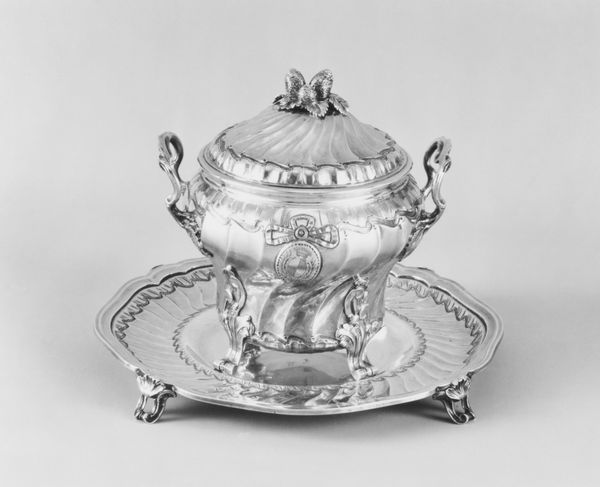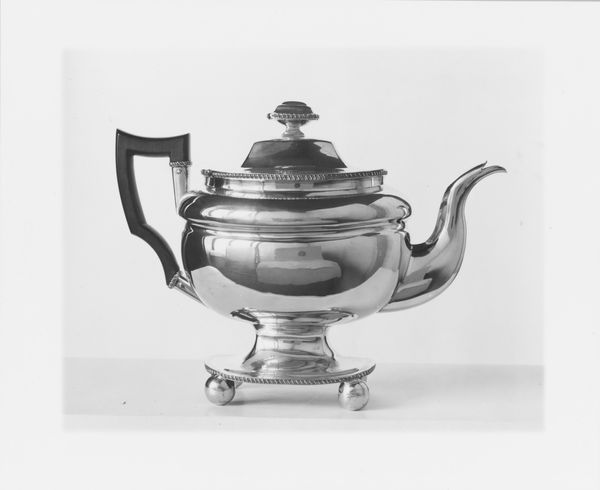
Dimensions: 10 3/16 x 10 3/8 x 6 3/16 in. (25.9 x 26.4 x 15.7 cm); 44 oz. 17 dwt. (1394.7 g)
Copyright: Public Domain
Curator: This is a silver teapot dating from the early 19th century, between 1825 and 1845. It's part of the decorative arts collection here at the Metropolitan Museum. Editor: It immediately strikes me as regal. There’s such formality in the bright luster, the elegant shape. It feels very precious, and almost unreal. Curator: Precious is right! Note how every surface has been thoughtfully wrought: observe the shell motifs around the base, echoing shapes found on ancient Roman fountains; notice how the handle itself is adorned with stylized acanthus leaves, and terminates at each end in spheres, one apparently made of ebony to shield from heat. Editor: All those details speak of the care, craft and economic excess lavished on something intended for... tea! It makes me think about the global context, about trade routes and colonial extraction, where a simple object like this connects to much wider exploitative structures. The elaborate adornment is less about beauty and more about proclaiming status and wealth. Curator: Absolutely. The teapot becomes a symbol, loaded with societal implications. The very shape contributes to that as well. While inspired by Baroque sensibilities, the contours tend toward an idealized symmetry. There’s an attempt to harmonize nature and the man-made world, albeit within strict hierarchical parameters. The animalistic spout mimics the handle with its leafy details; meanwhile, the body rises and falls asymmetrically, drawing the eye upward towards the fruit shaped finial topping the lid. The interplay is captivating, don’t you agree? Editor: Definitely captivating, in the way power and luxury always command attention. But it’s important to look critically. What does it mean to pour tea from something so visually extravagant? For whom was this daily ritual performed? Curator: The teapot embodies the intersection of luxury and symbolism in early 19th century society, inviting us to consider its cultural narratives. Editor: And to consider the power structures subtly encoded within everyday objects. It reminds us to question what we value, and why.
Comments
No comments
Be the first to comment and join the conversation on the ultimate creative platform.
